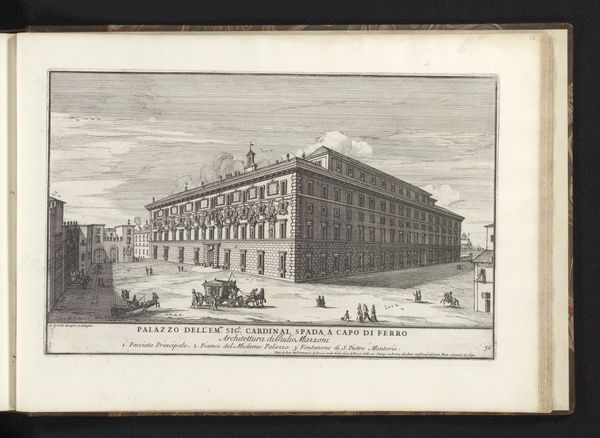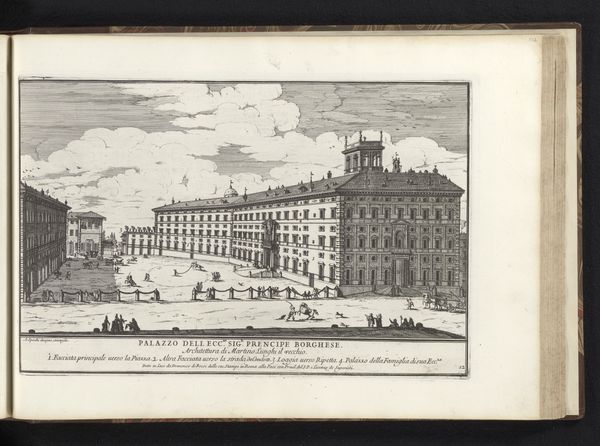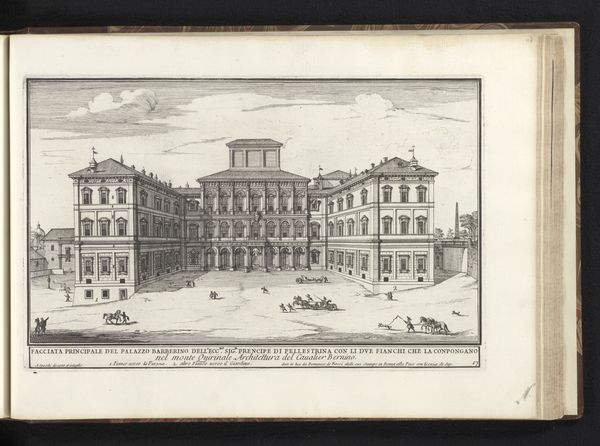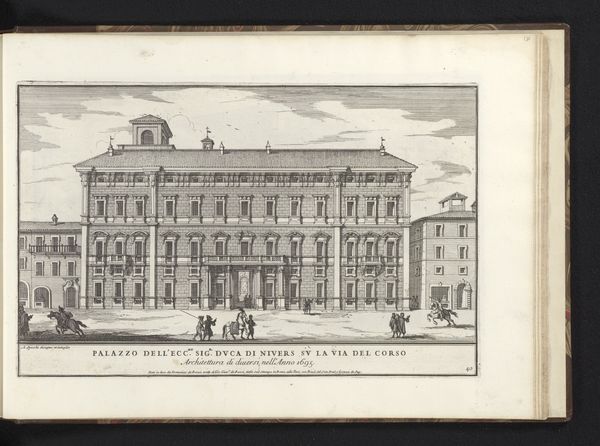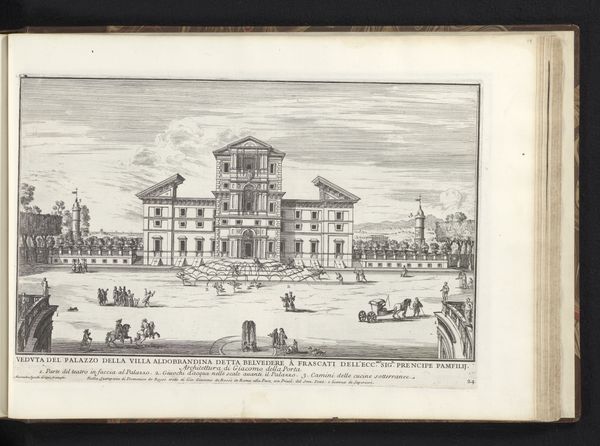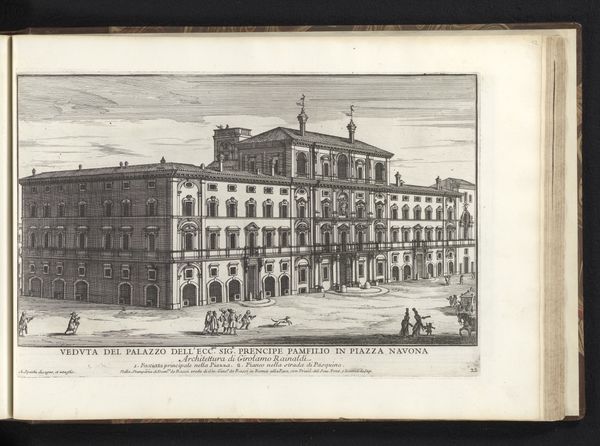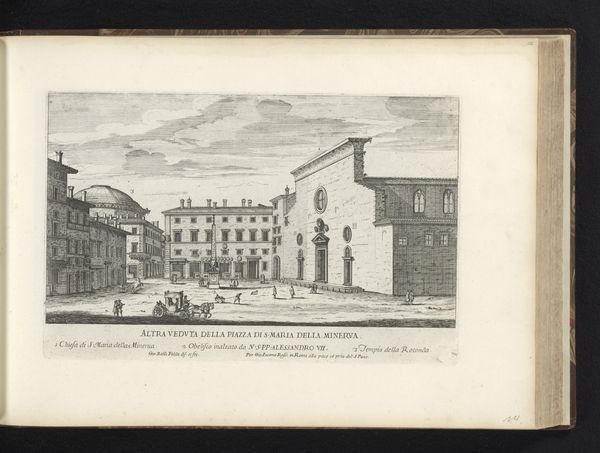
print, intaglio, engraving, architecture
#
baroque
# print
#
intaglio
#
cityscape
#
engraving
#
architecture
Dimensions: height 213 mm, width 327 mm
Copyright: Rijks Museum: Open Domain
Editor: Here we have Alessandro Specchi's "Palazzo Barberini te Rome," an intaglio print from 1699. The crisp lines of the engraving depict a grand architectural structure, yet the scene feels strangely uninhabited. What symbols or underlying narratives do you see at play in this cityscape? Curator: It’s interesting you mention the absence of vibrant life, because the emptiness allows for deeper contemplation of power. Baroque architecture often functioned as a symbol of authority. The Palazzo Barberini, grand as it is, becomes a vessel for conveying the Barberini family’s influence. Notice how the figures are dwarfed by the building. Does that speak to you? Editor: Absolutely. It’s like they are props to enhance the grandeur of the building itself. Is it designed to inspire a certain feeling? Curator: Precisely! The feeling of awe, perhaps even insignificance, in the face of immense power. Think about what the intended audience for this print would have felt. How might viewing this image have solidified their understanding of the Barberini family’s status? It becomes a symbol not just of wealth, but of enduring legacy and control. Editor: That's fascinating. I was focused on the visual, but understanding the symbolic intention behind its creation really shifts my perception. Curator: Indeed. These printed images spread ideas as much as information. The print is a tool to influence perceptions of the Barberini family. Understanding the symbols used allows us to decode the message they were sending, then and even now.
Comments
No comments
Be the first to comment and join the conversation on the ultimate creative platform.


